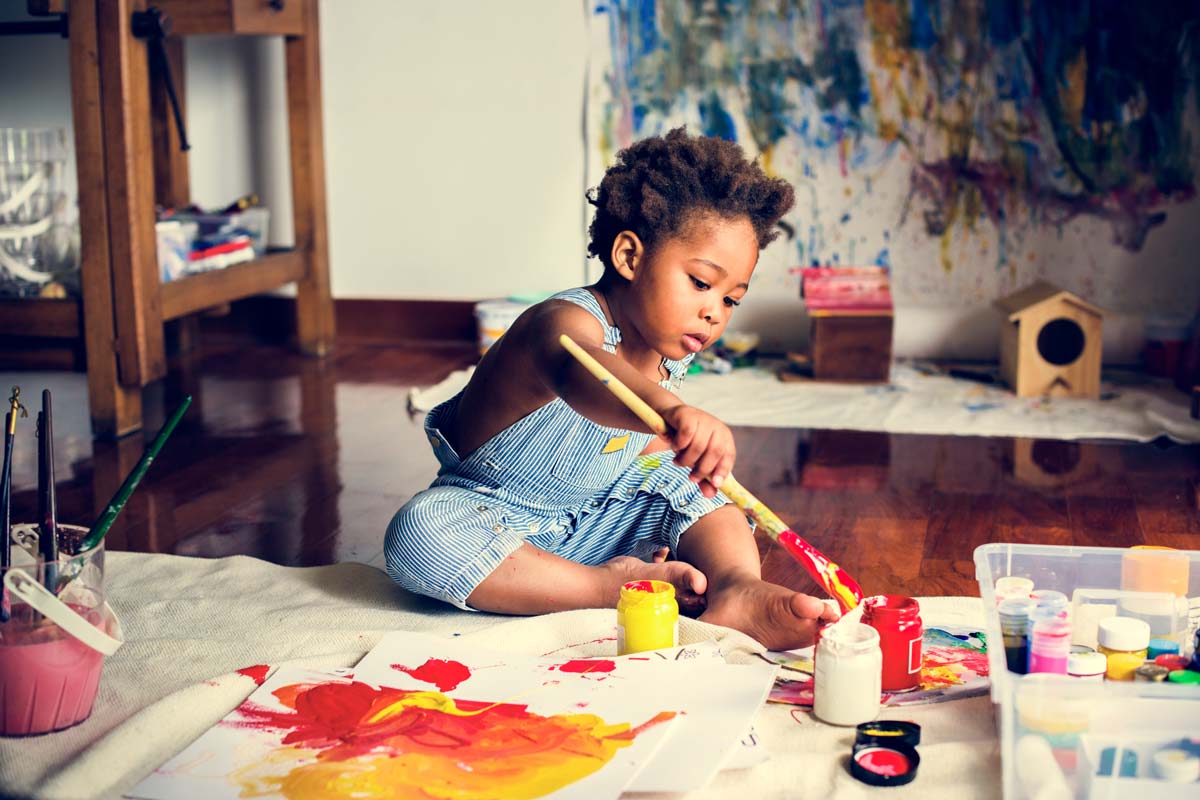Painting is more than just mixing colors and applying brushstrokes into an empty canvas. Painting is a form of expression, where the person who’s creating the artwork can pour their thoughts and ideas to shape them as they please.
For children, this activity can be a social exercise, especially when they get enrolled in an art class with several students, and also it’s an educational pastime, where they can reinforce some previous knowledge while acquiring some new concepts as well.
Children between the ages of six to eighteen months old can start learning how to paint by using materials that are fit for their ages, like homemade edible finger paint, and always under parental supervision. Learning about painting at such a young age can have several benefits for a child’s life, it can improve their education as well as their self-esteem and their view of the world that surrounds them.
Advantages Of Learning About Art For Children
The art of painting during childhood helps children develop their senses through visual and even tactile stimuli. It also helps them express their emotions through color. This can be a great tool to start developing inner peace, given that painting is an art that requires patience and dedication, and a lot of introspection.
Moreover, young children can start painting with their fingers and hands, turning this activity into sensory play. This is helpful to build the appropriate nerve connections in their brains and also it’s an excellent way of developing fine and gross motor skills as they grow up. This means that children will be able to gain coordination between their sight and their hands, making it easier for them to learn how to write.
Another essential point of painting comes from the fact that it’s useful to learn expression through color and forms, without having the need to use words. This is quite important for language development, considering that non-verbal communication helps children deliver the right thoughts and ideas.
Through painting, children learn more about the size, patterns, shapes, and even geometry. This is all necessary knowledge for a child that’s going to start going to school. Additionally, art helps children develop problem-solving skills, and is a great tool to boost self-discipline and self-motivation.
Finally, one of the most important benefits of painting with your child is that it’s a great time for you two to have some bonding time. Painting is a relaxing activity that allows you to create great memories with your little one that you’ll cherish once he or she grows up.
? Recommendations To Introduce Painting To Your Child
- Use materials that are adapted to your child, like big brushes, big paint containers that can’t be spilled easily (they can even be fixed to the table), a big canvas (it can be a big sheet of paper), a weasel fit for their height, and the right apron to minimize stains.
- Allow your child to switch from painting with the brushes to painting with fingers or hands. Let your little one learn how to pick up a brush and how to put it back into the paint container. Also, let your child learn how to deal with paint, and don’t be afraid of stains.
- Prepare a safe space for painting so that your child feels comfortable. It could be just a space in the living room, or you can even use the kitchen table. Have all the materials your child might use ready, like paper, paint, pencils, colors, water., etc. This way they’ll start respecting painting as an activity and will have the perfect mood to start creating art.
- Make sure to present the art supplies and focus on their names so your child feels more in tune with the process.
- Encourage your child to create original artwork based on his or her emotions, or give them a theme to start the painting. Instead of using some template, you can stimulate your little one’s creative side by giving him or her some pointers to develop original art ideas.
- Discuss your child’s work with him or her, this is the perfect opportunity for bonding. Take this task seriously, and make it safe to talk about art without criticism. It’s very important to always be supportive. Also, try to discuss your favorite styles and colors, and the paintings each one of you likes.
- Organize a trip to a museum or an art gallery, this way you’ll get to discuss art and have a great time outside the house. Also, this will give your little one some extra inspiration for their next work.
In art there are no wrong answers, so allow your child to be as creative as she or he wants when painting. Let them experience painting fully, and help them get their creative vision on point.
Painting can bring lots of joy to a family, and it’s also great to look at!





